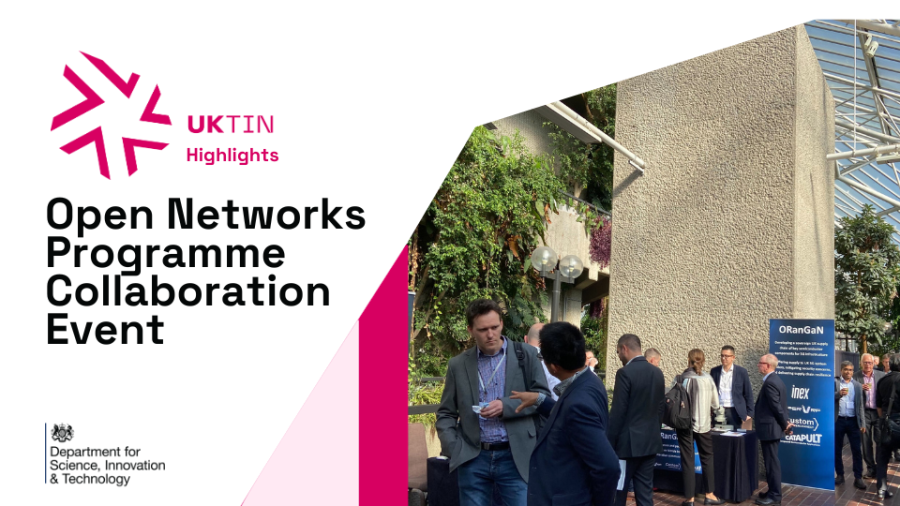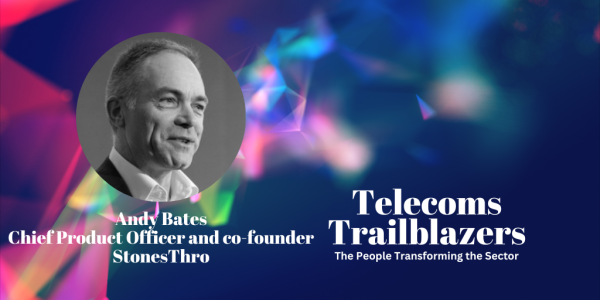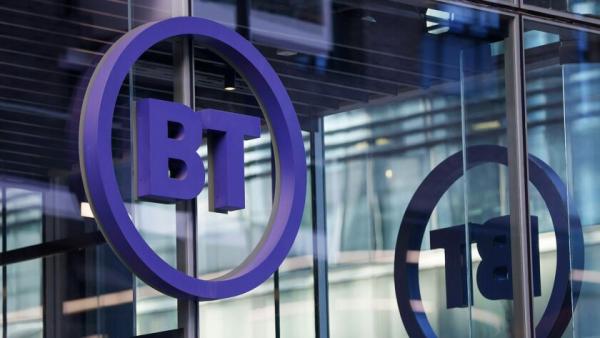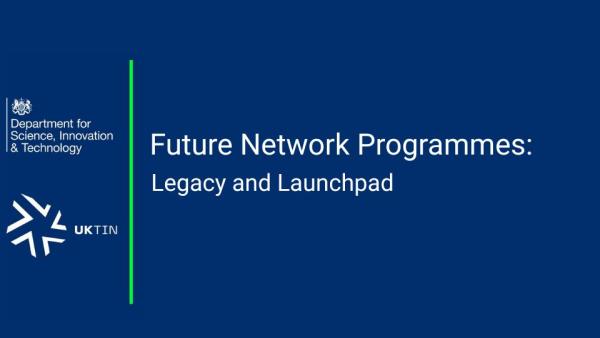
In London on the 14th of September, The Right Honourable Sir John Whittingdale, Minister for Data and Digital Infrastructure announced the 19 successful projects in the Open Networks Ecosystem (ONE) competition - a part of the government’s £250 million Open Networks R&D Fund delivering on the 5G Telecoms Supply Chain Diversification Strategy.
Alongside this, the day provided a mixture of conference, exhibition and networking opportunities, bringing together 250 attendees from the various projects funded by the Open Networks Programme. Representing a broad cross-section of the UK telecoms community, it was used as an opportunity to update others on progress and learnings to date, as well as share best practices and forge new connections.
What is the ONE competition?
With £88m of funding for 19 new projects, the ONE projects will help boost the technical capabilities of the UK’s open telecoms ecosystem. The UK will see trials of new mobile tech designed to increase the resilience of the UK mobile network and avoid overreliance on any one form of technology.
The competition winners are based across the UK, including urban areas such as Cardiff, Glasgow and London, as well as tourism hotspots Bath and Blackpool, and rural areas of Dorset and Shropshire. See the list in full here.
The ONE competition has been designed to tackle barriers to the adoption of open mobile networks in three key challenge areas: RAN Intelligent Controller (RIC) and other RAN Software Automation; Processors, RF, and other RAN Hardware; and High-Density Demand sites. Throughout the day attendees heard about the new projects, with panellists discussing their plans and initial thoughts on these challenges. Recordings of all sessions will be published shortly.
Whittingdale summarised the importance of the investment: “I am under no illusion about how important connectivity is. We should have a diverse telecoms supply chain. DSIT is leading the government’s approach to ensuring this, critically investing in R&D. Funding 19 new projects is a commitment to support a thriving ecosystem in the UK. Why are we investing £250 million in Open RAN? We want to boost the economy by providing the infrastructure that the UK needs and position our country as a superpower. Telecoms keeps us connected, and has never mattered more.”
More than just the new
Exploring and acknowledging the achievements and learnings to date was an important goal of the event.
Simon Rowell, Head of Market Development, Future Network Programmes, DSIT, said:
“Today tells the story of the evolution of the FRANC projects to the new ONE projects. It is also a celebration of the graduation of the FRANC Projects. Some great connectivity innovations have been produced via our competitions. It is a real success story, showing what can be achieved - and what will continue to be achieved going forward.”
The value of government and industry working together was also a key theme. Keith Bullock, Future Network Programmes Director, DSIT, explained: “The Government is trying to do everything it can to ensure the quality of fixed broadband and national infrastructure, as well as security. We are also interested in vendor diversification and how innovations will positively impact residents, businesses, and public sector services. To advance and inform policy we want to work with the operators, strengthen the supply chain, and liaise with local authorities. We want to be better engaged with the market and do more than just channel money into the telecoms sector. We want to have a dialogue with you.”
A series of panel sessions then enabled attendees to explore some of the pivotal insights arising from the FRANC and FONRC projects so far:
Panel session: Challenges to interoperability
Chaired by Dritan Kaleshi, Head of Technology, 5G, Digital Catapult (SONIC) and UKTIN Lead for Future Telecoms Capability, experts discussed how to tackle this systemic issue, made more difficult in multi-vendor environments
Eran Shalev, VP Head of Product Management, Parallel Wireless (Proteus), said: “We are very lucky to work in an industry where we have complex but good standards that cover all areas. This helps with many interoperability issues. If everything was covered and exactly defined, there would be no issues. Interpretation of standards, however - for example, optional items - means that compliance can be open to interpretation. Labs such as SONIC can largely solve this, pushing conformity and testing network elements beforehand.”
Bozidar Radunovic, Senior Principal Researcher, Microsoft (Towards AI), added: “The RAN is a real-time, finely tuned system - the requirements are stringent”. He shared his own experiences of challenges in the project’s lab testing as evidence of the difficulty in managing real-time interoperability.
Maria Lema, Founder of Weaver Labs (O-RANOS and REASON), said: “Whatever corner of the sector you’re sitting in, we all want Open RAN to succeed. It should be the de facto configuration for the next generation of cellular. Let’s use API models, bring in the open-source community and create innovation in the network. Companies such as Microsoft and AWS have platforms that open up to the developer community. Once we successfully solve the challenges of hardware and connectivity layers, we should be thinking about bringing others - perhaps the RIC or AI - into the industry.” Lema also observed that “hardware is becoming one of the biggest roadblocks in diversifying how we build networks”.
Key takeaways:
- Managing interoperability in a real-time RAN environment is hard
- Standards can help but challenges can arise in the interpretation and knowing which standards body to align with
- Even with the RIC, you will need a lot of interoperability work between hardware and software
- Testing much earlier is paramount
- Interoperability requires effort but tackling this means we can look at performance
Panel session: Interworking between private, public and neutral host networks
Chaired by Nick Johnson, Head of UKTIN, panellists highlighted the importance of managing identity and roaming between different networks
Dez O’Connor, Senior Manager, Cisco (5G DRIVE), said: “You have to meet identity where identity lives. In a private network, this will be a private identity. One identity that moves between all networks is probably not viable. The concept of federations, however, is a good construct. If we want to think about building the largest worldwide ecosystem, federations are essential for identity management. It’s not just about identity but also discovery and physical connections. We can’t use the existing international roaming model, especially in private networks where we’re working with things as well as people.” O’Connor shared the Open Roaming concept developed by Cisco for Wi-Fi and how the 5G Drive project had taken a similar approach to private network roaming.
Anthony Magee, Senior Director of Business Development, Adtran (UK 5G DU-Volution), said: “It’s not always about users moving around. It can also be things. Private networks may have a very high tolerance and SLAs for mission-critical services. The consideration is not just whether I can get on to another network but whether I can do that with a service parity.”
James Body, CEO of Telet (Best of British RAN Development), commented: “You may have more than one identity. We see us working in a world where we have multiple identities. There’s no reason why you shouldn’t or couldn’t do that. Your identity needs to work on public networks and private networks seamlessly. That’s where we want to get to.”
Key takeaways:
- A single identity across all networks is unlikely to be feasible or desirable
- Private 5G networks remain a boutique business and are probably not currently needed by ‘carpeted enterprises’
- Roaming between private networks needs to consider both things and people
Panel session: AI: Is it a double-edged sword for future security?
Chaired by Lory Thorpe, Global and Solutions and Offerings Director, Telecommunications, IBM, and UKTIN Advisory Board member, the experts talked about improving the security of open networks
David Rogers, CEO of Copper Horse, said: “AI reduces labour and human processing...but we need to engineer for Satan and look for malicious intent, not errors.”
Scott Alexander, Chief Product Officer, Arqit (Secure 5G Platform using Novel, Efficient Wideband PA) said: “Self-optimising networks as a concept is not new, which is where we’re heading with AI, just with even more power. AI has extremely positive outcomes, especially when we consider quantum. We need to go back to the building blocks of security. How do I authenticate in the virtual world? AI will detect weaknesses – which means you can use it to find weaknesses to attack. Using AI to protect against AI is perhaps where we’re heading. When things are communicating with each other, how do you know who they are? How do you permanently authenticate? The industry needs to undertake an initial identification of weakness and then look at how we can make networks more robust.”
Siraj Shaikh, Professor in Systems Security, at Swansea University, said: “We need to design systems with a threat model in mind, with a model that can continuously evolve. Other industries take existing principles from safety-critical design: for example, AI is being used for sophisticated automation such as aviation safety. If we consider AI as the next step in telecoms, then the methodology of creating and adopting safety cases must also be adopted. But we need to have a slightly regulated approach, where the regulator makes sure the supply chain and operators are delivering. 5G will underpin critical safety and remote operational systems: we can’t afford to get this wrong. It’s a matter of life and critical infrastructure.”
Key conclusions included: AI can be used for both good and bad when it comes to cybersecurity; new threats will always emerge so we need to focus on both the design element and in-life monitoring for resilience; legacy systems will always be a challenge in telecoms so it may make sense to logically separate future networks from legacy systems to protect them; open networks provide opportunities for extra layers of security which can potentially outweigh the potential risks of bringing in multiple vendors.
Panel session: Skills for the future
Chaired by Lesley Holt, Director of Acceleration and Adoption, WM5G and UKTIN Lead for Talentthe group encouraged an agile and responsive ecosystem
Carol Fletcher, Head of Academic and Research Partnerships, BT, said: “We have to think about careers in terms of “and”, rather than “or”. The world doesn’t allow for individual specialisms anymore, and the telecoms ecosystem needs to facilitate a drive for additive skills development throughout people’s careers. People are excited by connectivity and what it enables. AI and other new technologies would fall apart without it. Let’s make that known”.
Charlotte Goodwill, CEO of The ITP, continued: “There are lots of learning opportunities but whether they’re fully utilised or not is a different story. We have apprenticeships, bootcamps and short-term courses but a lot of them become out of date very quickly in our industry and educators can’t keep up with the changes. The ITP, providing enhanced learning and knowledge services to fuel the UK telecoms tech sector, is looking to address that.”
Vishal Mathur, Global Head of Engagement, Telecom Infra Project (Accelerating RAN Intelligence in 5G), said: “We have an ageing workforce. Determined by traditional ways of working in telecoms, it’s not seen as a sexy industry to those we’d like to bring in. We may enable AI, security and so on but these sectors are taking away the potential talent and converging with our skills bases. We need to build awareness and educate at a grassroots level about what our sector can do. Rebranding perhaps as connectivity rather than telecoms could work.”
Holt added: “Please come and engage with UKTIN Talent. This dialogue has to continue. It has to be more than dialogue.”
Key takeaways:
- We need to ensure a healthy talent pipeline to take advantage of the R&D taking place
- Our sector is doing incredible things but we need better ways to communicate that externally
- Reskilling and upskilling should be seen as an ongoing part of working in telecoms
- UKTIN is bringing together the sector, training providers, educators and careers advisers to tackle these challenges head-on
The day closed with remarks from Rowell, who highlighted the “energy” in the room and described the event as “a day of optimism for the UK telecoms sector”. “Go forth and prosper”, he concluded.
Follow UKTIN on Twitter for further updates and see more from the event:









